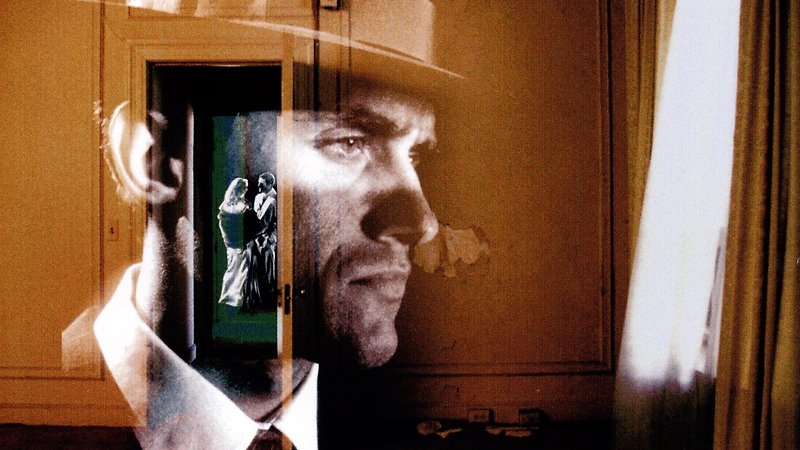
Screened as part of NZIFF 2003
The Decay of Fiction 2002
"Avant-garde film pioneer and special effects inventor Pat O’Neill, whose classic shorts from the '60s and '70s led to his acclaimed features like Water and Power, turns his formidable experimental technique on Hollywood in The Decay of Fiction. The legendary Ambassador Hotel, where Joan Crawford and Marilyn Monroe were discovered and Bobby Kennedy was shot, materializes like Stanley Kubrick’s Overlook Hotel run wild; its empty rooms haunted by ghosts from imaginary Hollywood movies, appearing in transparencies as they play their fictional roles for eternity." — Deborah Young, Variety
In the abandoned Hotel Ambassador, Los Angeles, time and its ravages progress at an alarming rate: the shadows of palm trees sweep across the drained swimming pool, curtains flutter frantically in an accelerated breeze. The ghosts that inhabit this enormous film set, however, still cling nostalgically to the rhythms of life, endlessly reliving long-resolved pulp fictions, drifting amnesically through the historic corridors.
Pat O’Neill’s dreamy rumination on history, myth and collective memory enlists impeccable optical technique to elaborate his simple, resonant idea: the simultaneity of multiple time periods, of fact and fiction, life and death. O’Neill expertly superimposes characters seemingly recalled from venerable film noirs (but actually carefully reenacted in black and white) onto contemporary colour tracking shots through the derelict hotel. The synchronisation of the two layers within the image is incredibly precise, even when they’re travelling at different speeds, and the aura of temporal discontinuity is marvellously enhanced by the soundtrack’s mélange of dialogue and music from old movies, real and imaginary. In this film, the actual history of an LA monument becomes indistinguishable from the fading memories of the movies that co-opted it.
There’s no story to speak of (though plenty of fragments of stories), but The Decay of Fiction has an almost musical structure. At the outset, there is a clear distinction between the content of the different visual layers, but with time these distinctions break down – characters seem to burst out of monochrome memory, for example – and the leisurely glide through the hotel is punctuated with dark, uncanny interludes (masked men, shyly dancing mannequins). Towards the end of the film, the categories get thoroughly scrambled. In one visually dense sequence, the kitchen ghosts seem to get caught in smeary timeloops, and the film ends with a delirious danse macabre of shadow figures, naked demons and other lost souls. — Andrew Langridge